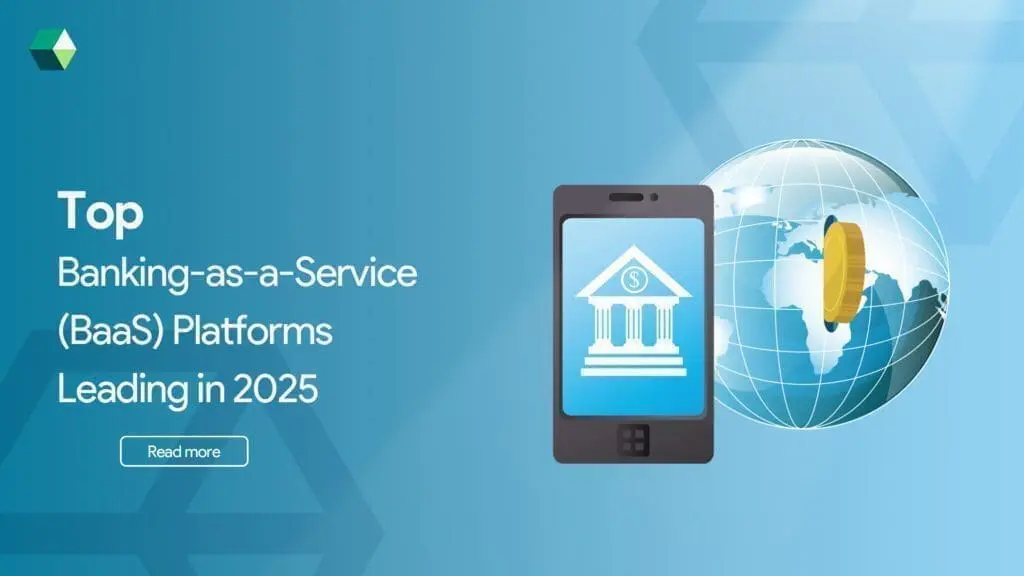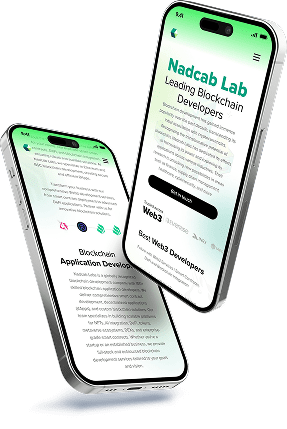
Banking is changing fast in 2025. Old banking methods are being replaced by digital and cloud-based solutions. One big change is Banking-as-a-Service (BaaS). This lets businesses like fintech startups, online stores, and even non-financial companies offer banking services without becoming full banks. They can use BaaS platforms to give customers safe and fast financial tools. Also, Cryptocurrency Banking Apps are becoming popular, helping people manage both regular money and crypto in one place.
In this blog, we’ll take a deep and user-friendly look at what BaaS is, why it matters in 2025, and which platforms are leading the market globally. We will also explore the benefits, use cases, and future trends to help you make informed decisions.
Understanding the Banking-as-a-Service Model
Banking-as-a-Service (BaaS) refers to a system where licensed banks or fintech providers allow non-bank businesses to embed banking features into their products. This is done through APIs (Application Programming Interfaces), which serve as the communication bridge between the company’s software and the bank’s system.
In simpler words, if you’re a business that wants to offer your customers things like debit cards, savings accounts, or instant payments—but you’re not a bank—you can do it by working with a BaaS platform. These platforms handle the regulatory, technical, and banking back-end so you can focus on user experience, branding, and innovation.
Why BaaS is Booming in 2025
The global demand for Banking-as-a-Service is rising rapidly, and the reasons are clear:
- More fintech innovation: Startups need a fast way to enter the financial space.
- API-first thinking: Companies can easily plug into advanced banking tools.
- Reduced costs: No need to get banking licenses or build everything from scratch.
- Faster launch time: Businesses can go live with products in weeks instead of years.
- Wider access: BaaS is expanding financial services to people who previously had none.
- Win-win models: Banks gain revenue from APIs, and companies build new services easily.
In 2025, BaaS is seen not just as a tech solution but as a strategic growth tool for businesses across sectors.
How BaaS Works – A Simple Overview
Here’s a step-by-step breakdown of how BaaS typically works:
- A BaaS provider partners with a licensed bank.
- The provider creates APIs to access the bank’s infrastructure.
- Businesses subscribe to these APIs and integrate them into their own apps.
- Users interact with the business, thinking it’s the one providing the banking service.
- Behind the scenes, the licensed bank handles all the regulations and compliance.
This setup allows for fast, secure, and compliant banking experiences, fully branded under the business’s name.
Top Banking-as-a-Service Platforms in 2025
Here are the BaaS providers that are leading the space in 2025, based on their market share, innovation, scalability, and customer satisfaction.
-
Nadcab Labs (India/Global)
Overview:
Nadcab Labs is a custom blockchain and fintech development company that has entered the BaaS space with tailored solutions for startups and enterprises across the globe.Key Features:
- Custom-built BaaS infrastructure
- API-based KYC, payments, and banking solutions
- Integration of blockchain and digital assets with banking workflows
- White-label banking platforms for crypto exchanges, wallets, and neobanks
Why It Stands Out:
Nadcab Labs offers flexibility in deploying both traditional and blockchain-integrated BaaS platforms, making it suitable for Web3 projects, crypto banking solutions, and fintech startups seeking an edge. It is especially known for delivering turnkey solutions adapted to specific industry and regional needs. -
Solaris (Europe)
Overview:
Solaris is one of Europe’s top BaaS providers, offering services across Germany, France, Italy, and other EU countries. It provides everything from IBAN accounts to virtual and physical cards, lending tools, and even cryptocurrency integration. Its robust compliance system makes it ideal for fintech companies and digital banks across Europe.Key Features:
- IBAN accounts
- SEPA payments
- Crypto wallets
- Lending APIs
- KYC/AML checks
Use Case
A travel app offering multi-currency wallets and instant Euro transfers. -
Railsr
Overview:
Railsr provides a flexible and developer-friendly platform. It’s especially popular among startups looking to launch fast with payment and card services. Railsr also supports loyalty programs and spend management features.Key Features:
- Real-time payments
- Virtual and physical card issuing
- Easy KYC and onboarding
- Spend controls
Use Case
A gig economy platform that pays workers through branded prepaid cards. -
Marqeta (USA)
Overview:
Marqeta is a global leader in card issuing. It is used by major tech companies like Square, DoorDash, and Uber to power custom debit and credit card experiences. Its modern, open API is highly scalable and trusted for high-volume operations.Key Features:
- Just-in-time (JIT) funding
- Virtual card generation
- Real-time transaction monitoring
- Strong security features
Use Case
An online marketplace offering cashback and rewards via branded cards. -
Unit (USA)
Overview:
Unit has gained popularity among U.S.-based startups. It helps businesses create full banking experiences, including checking accounts, debit cards, lending, and ACH payments. It also handles compliance, making it very startup-friendly.Key Features:
- Compliance automation
- Bank accounts and transfers
- Card issuing
- Lending tools
Use Case
A budgeting app with built-in savings accounts and overdraft protection. -
Treezor (France)
Overview:
Treezor is a leading BaaS provider in France and is widely used across Europe. Owned by Société Générale, it offers white-label services for neobanks and mobile payment companies.Key Features:
- IBAN creation
- SEPA/SWIFT payments
- KYC/AML integration
- Card issuance
Use Case
A mobile bank offering instant account setup for European residents. -
Bond (USA)
Overview:
Bond provides embedded finance infrastructure for modern applications. It offers developer-friendly tools that simplify bank partnerships, compliance, and risk management.Key Features:
- Customizable API suite
- Hosted onboarding flows
- Fraud prevention tools
Use Case
A ride-hailing app offering in-app driver wallets and instant payouts. -
Synapse (Global)
Overview:
Synapse provides end-to-end banking solutions including identity verification, account management, and even investment tools. It aims to make banking programmable and accessible globally.Key Features:
- Global payments
- Credit-building products
- Investment APIs
- Financial data access
Use Case
A student platform offering microloans and savings for tuition.
Benefits of BaaS for Businesses in 2025
BaaS platforms provide more than just technology. They open doors to:
- Speed: Launch products rapidly without deep technical setup.
- Cost-saving: Avoid the overhead of banking licenses.
- Innovation-first: Focus on user experience and features, not backend systems.
- Compliance-ready: Built-in KYC, AML, and financial security protocols.
- Scalable: Expand easily into new markets with global BaaS support.
Major Trends Fueling the BaaS Boom in 2025
- AI and Automation- Smart AI tools are being added to BaaS platforms to detect fraud, assess credit scores, and automate compliance.
- Embedded Finance- Apps outside the financial industry—like travel, fitness, and education—are embedding banking tools to increase engagement.
- Crypto Integration- Some BaaS platforms now offer wallets and on/off ramps for cryptocurrencies, helping brands tap into Web3.
- Green Finance- Eco-friendly cards and carbon tracking features are becoming common in BaaS offerings.
- Global Inclusion- Platforms are moving into Africa, Southeast Asia, and Latin America, where digital banking needs are growing rapidly.
How to Select the Right BaaS Platform
Before choosing a BaaS provider, consider the following:
- Are you focused on card issuance or lending?
- Do you need crypto support or blockchain integration?
- What regions are you operating in?
- Do you want an off-the-shelf solution or a custom-built platform?
For startups and enterprises needing full customization, Nadcab Labs provides end-to-end consulting and development. Meanwhile, larger enterprises might partner with licensed platforms like Solaris or Unit.
Start Your BaaS Journey Now!
Banking-as-a-Service is changing how we think about finance. It empowers companies to become providers of financial services without building a bank. In 2025, this is not a future trend—it’s today’s reality. With platforms like Solaris, Marqeta, Unit, and Synapse leading the way, it’s easier than ever to add banking features to your product.
Choosing the right BaaS provider will depend on your location, customer needs, and the type of services you want to offer. The good news is—there’s a growing list of trusted, reliable platforms available worldwide.
Whether you’re a startup, bank, or e-commerce platform, there’s a BaaS solution tailored for your goals. As the ecosystem continues to grow, platforms like Nadcab Labs are making it easier than ever to blend innovation with compliance and scale securely. If you’re ready to launch your own digital bank, crypto wallet solutions, or embedded finance service, partnering with the right BaaS provider can accelerate your success in today’s dynamic fintech world.
- DEX Lending Platforms
- MLM Software Delhi
- MLM
- Go
- Rust
- Solidity
- Crypto Token
- Token Launch
- Polkadot Blockchain Development
- Polkadot JAM Chain
- Governance Proposal
- Governance Proposals in Web3
- Mining Pool
- DEX Lending
- Listing Platforms
- ICO listing services
- ICO Listing
- DeFi Aggregator
- Blockchain Technologies
- Metaverse Development
- Pre-Mined Tokens
- Supply chain
- Storage Platforms
- Decentralized Data Storage
- Decentralized Storage

 Blockchain
Blockchain  Apps & Game
Apps & Game  AI & ML
AI & ML  AR & VR
AR & VR  IOT Services
IOT Services  E-commerce
E-commerce  Frontend Developer
Frontend Developer  Backend Developers
Backend Developers  Game Developers
Game Developers  Ecommerce Developer
Ecommerce Developer  Dedicated Developers
Dedicated Developers 





